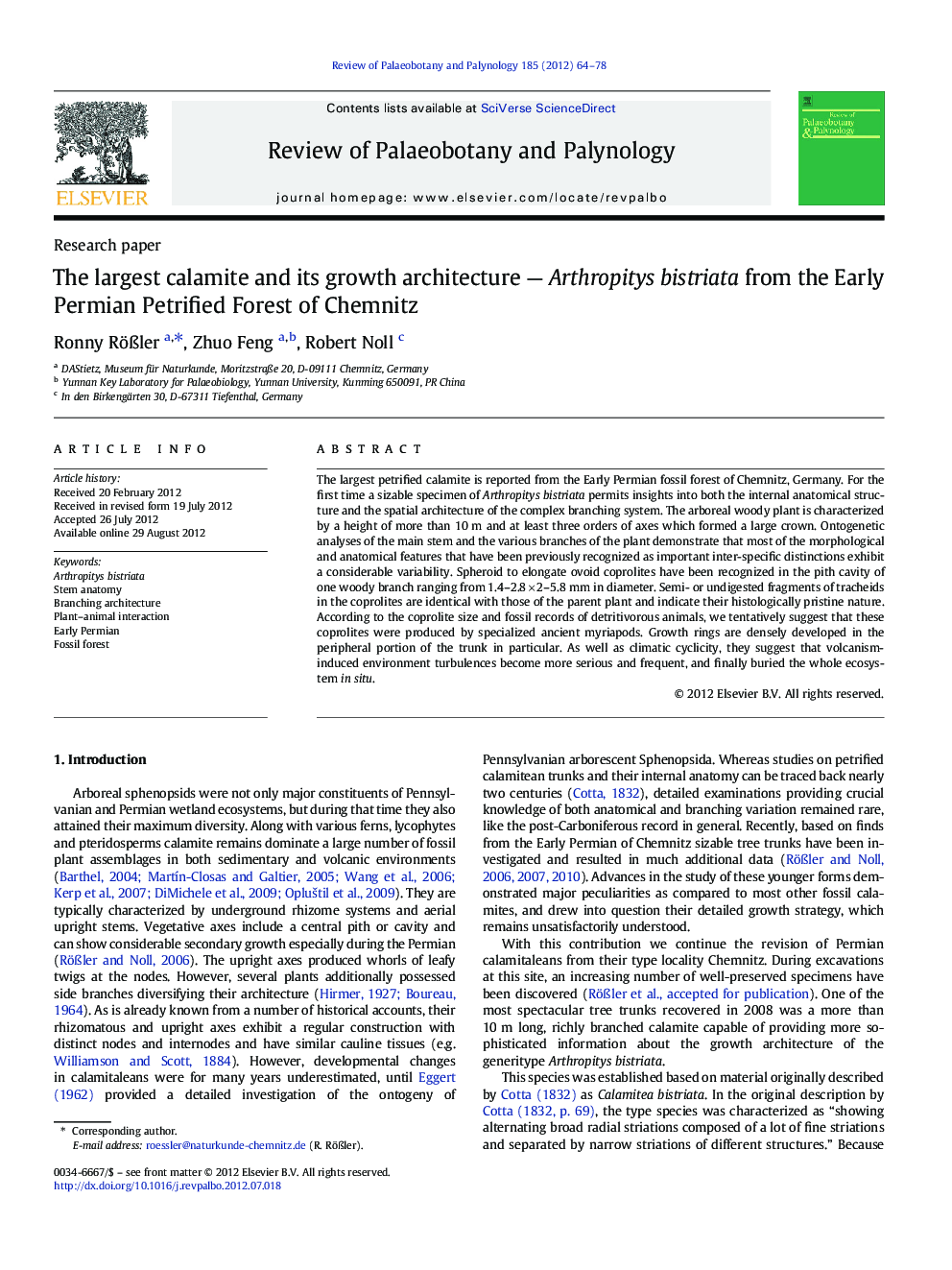| Article ID | Journal | Published Year | Pages | File Type |
|---|---|---|---|---|
| 4750381 | Review of Palaeobotany and Palynology | 2012 | 15 Pages |
The largest petrified calamite is reported from the Early Permian fossil forest of Chemnitz, Germany. For the first time a sizable specimen of Arthropitys bistriata permits insights into both the internal anatomical structure and the spatial architecture of the complex branching system. The arboreal woody plant is characterized by a height of more than 10 m and at least three orders of axes which formed a large crown. Ontogenetic analyses of the main stem and the various branches of the plant demonstrate that most of the morphological and anatomical features that have been previously recognized as important inter-specific distinctions exhibit a considerable variability. Spheroid to elongate ovoid coprolites have been recognized in the pith cavity of one woody branch ranging from 1.4–2.8 × 2–5.8 mm in diameter. Semi- or undigested fragments of tracheids in the coprolites are identical with those of the parent plant and indicate their histologically pristine nature. According to the coprolite size and fossil records of detritivorous animals, we tentatively suggest that these coprolites were produced by specialized ancient myriapods. Growth rings are densely developed in the peripheral portion of the trunk in particular. As well as climatic cyclicity, they suggest that volcanism-induced environment turbulences become more serious and frequent, and finally buried the whole ecosystem in situ.
► We describe a more than 10 m long fossil calamite, the largest ever found. ► It was preserved instantaneously during the emplacement of a pyroclastic surge. ► We demonstrate the spatial architecture of the complex branching system. ► We provide plant–animal interactions that point to detritivorous myriapods.
